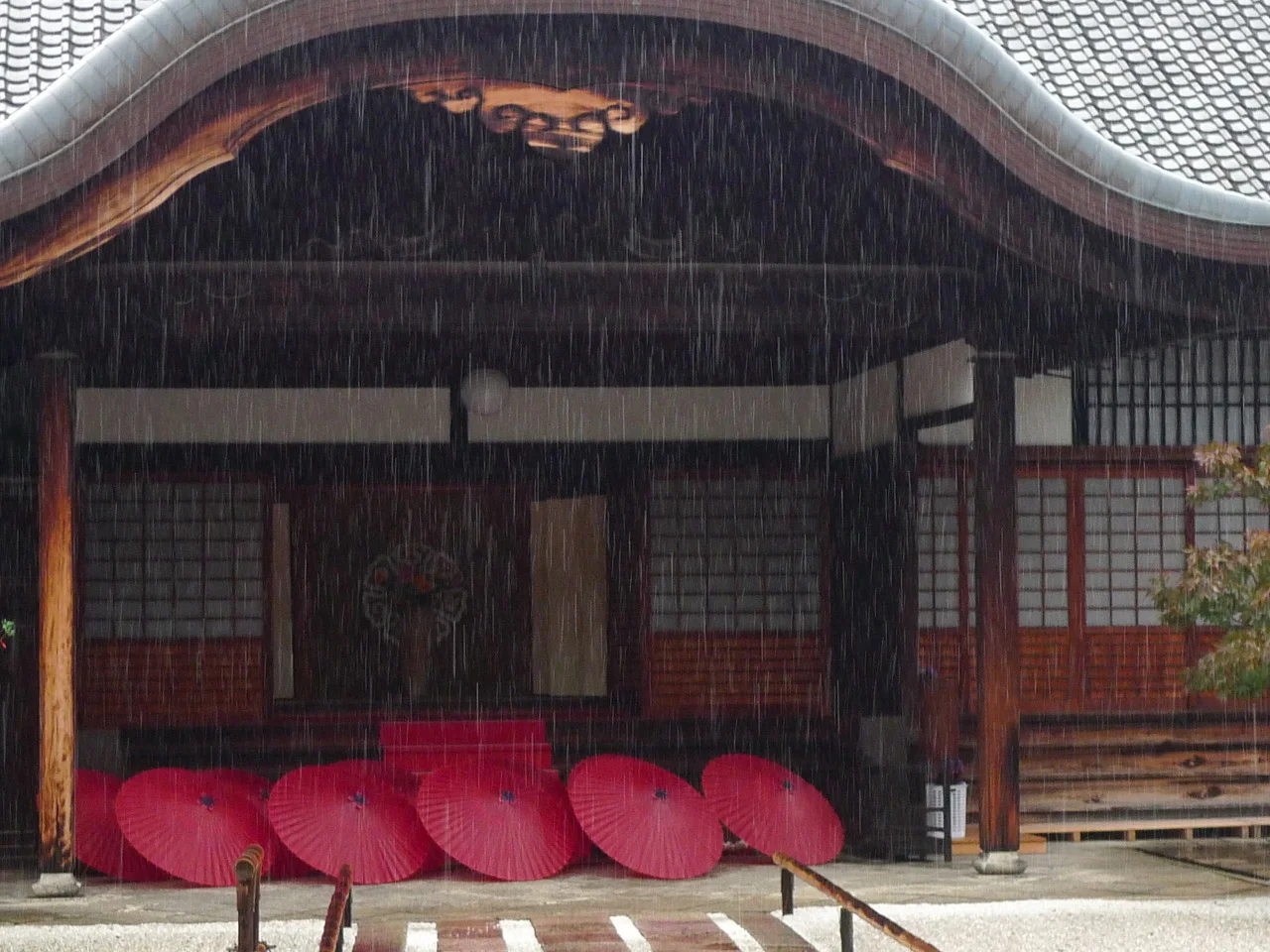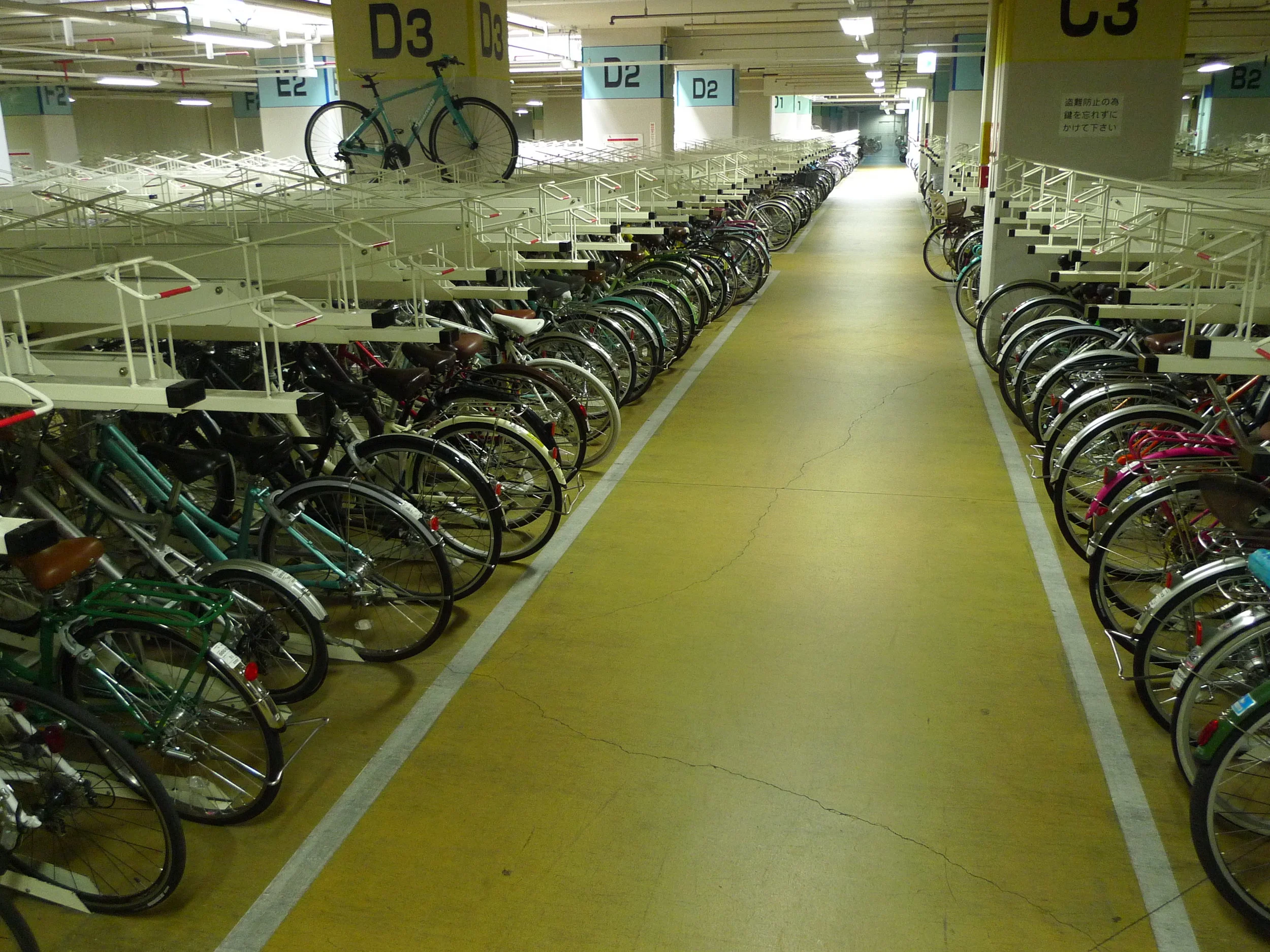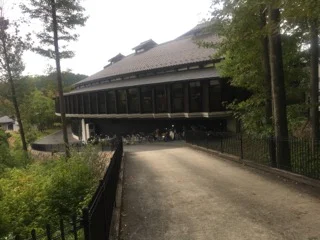Kyoto Diaries - 3
Raining. Another typhoon in the offing. Traditional rice growers are worried as this has been an exceptionally wet Fall and the rice drying in the fields risks rotting. I visited a yamadanishiki rice grower – 2 hectares – the rice used for sake, in the outskirts of Kobe. He was in his 70s, his rice is renowned and sold to one brewery who makes several sakes, but you can purchase the special sake make with this grower’s rice. There are 20,000 sakes in Japan, and they are a world unto themselves, with a huge range of taste, quality, aroma, labels and bottles. That would be another lifetime of learning (not to mention shochu a rice spirit at ~ 25% alcohol). Sake rice is much fatter than eating rice, and the plant is almost twice as tall. There is no problem if it lodges under rain or wind for harvesting or quality, as long as it dries before the harvest. And that is a problem this season. Rice must be harvested and hung to dry in the field to attain the desired qualities, dried in an enclosure with heat will change the rice’s flavor and consistency.
Last weekend I went to the Miho Museum, designed by I.M. Pei, about 2.5 hrs from Kyoto on public transportation, including several trains and a taxi. It is in a seemingly remote area. One leg of the train ride involved taking a small, single track one car regional train that must have been 40 years old, in impeccable condition of course. We chugged through a wide rice growing valley up the mountain, around curves, through dense secondary forest with patches of bamboo, coursing streams (all channelized), and through small villages. Charming. The region where the Miho Museum is located is also well known for a pottery/ceramics school, so the town where the train was full of ceramics shops. A 20 minute ride later I arrived at the Miho, an extraordinarily elegant place. You begin at a visitor center, restaurant, museum shop. The Miho has its own farm and raises organically grown produce, rice and soy beans, sells its own soy sauce and other delicacies. The lunch was exquisite, and the tofu they make, delicious. Yes, there are taste differences among tofus!
The driveway up to the museum was lined with peach trees, now losing their leaves, but the spring bloom must be splendid. The vast tunnel – one walks or takes a silent electric cart- goes through the mountain and is formed by an archway lined with perforated steel and illuminated softly and warmly. The tunnel makes a slight curve so you can’t see the end, quite, then once you make the turn, the discrete museum entrance can be seen at the end of a beautiful suspension bridge over a deep creek bed. Again, no expense was spared for this museum, and the way in which it sits in the mountain, half underground, half above ground, with viewing windows over the next large valley and mountain range, was stunning. The collection of Japanese artifacts from 600 ad to the present showed few objects, but obviously, they were flawless. I am always stunned at the craftsmanship and knowledge of materials that people had so long ago. I think we do not truly comprehend the depth of preindustrial skill at utilizing resources and the degree of dexterity that people had in manipulating materials.
The ride home, an hour on the bus, then the train, was revealing of what is often said of Japan. They love concrete. Through the dense vegetation, one could perceive a vast public work, consisting of lots of concrete pumping. Behind and underneath vast crisscrosses of highways and rail lines across the narrow valley we were making our way down on a one track road, what seemed like a new dam was being built, more deep manipulation of the river, already encased in hardened edges. Of course, the dams and channeling of rivers have vastly reduced chronic flooding (Ca has fire, floods and earthquakes; Japan has fire, floods and earthquakes + typhoons and tsunamis). But it does mean significant negative impacts on fisheries and riverine ecosystems, as well as for remaining wetlands.
From what I have been learning, Japan was industrialized very differently than countries in the west. Its been characterized as an ‘industrious’ revolution, highly labor intensive rather than capital intensive. It underwent intensification by adding more people to engage in productive enterprises on the farm, and industry was scattered across the countryside, not in cities. Rice varieties were bred to have higher yields enabling more people, and silk worm growing was added, as well as spinning and weaving. Then cotton was introduced. The family farm became an industrial production unit, absorbing women and children’s labor. Highly skilled and disciplined labor. Population was, however, controlled. Infanticide and abortions were practiced. The village was the organizing entity for local resource management such as irrigation. Sanitation and education became priorities in the Togukawa period, starting in the 1600s And so, it seems that Japan’s landscapes became productive through and through, not rural in a pastoral sense, but not organized around city-hubs either. It offers an interesting lens to think about humanity and nature, the name of the research Institute I am visiting. It seems to reflect a very deep and intensive interaction between nature and its resources, and humans. The Japanese have used practices such as coppicing of the forests for charcoal and wood production for centuries, perhaps millennia since slash and burn was practiced too. In Europe, the coppicing (a traditional method of woodland management which exploits the capacity of many species of trees to put out new shoots from their stump or roots if cut down; young tree stems are repeatedly cut down to near ground level, known as a stool) practices of peasants were forceably curtailed by the state that imposed rational scientific forestry practices on peripheral regions. This was, in part, political, seeking to impose centralized control and force ‘unruly,’ destructive peasants off the land and into cities. No such thing happened here, and coppicing, where there are still rural dwellers, is practiced.
It does stimulate the imagination relative to what a post carbon future might look like. Will humans really be primarily urban dwellers if we move away from hydrocarbon fuels? How can cities of 35-40 million – like Tokyo – be supported without the extraordinary energy density provided by that hydrocarbons? Perhaps another alternative might be a reinhabitation (in the case of Japan) of the countryside, and deconcentrated urbanism based on deconcentrated energy sources, like the sun, wind and hydro. Industrial production would continue, but its shape, labor process, inputs and outputs would be potentially, dramatically different. And in the U.S., it would mean far greater care of peri-urban resources and utilizing them intensively, rather than paving them over for suburbs. . . or something like that! Anyway, its fun to think about all these things.
Off to downtown on my bike, with my big rain cape. Lots of great rain gear here for bike riding.





